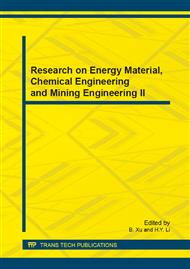p.263
p.269
p.275
p.279
p.286
p.290
p.297
p.303
p.308
Dynamicly Observing Influence of Ambient PM2.5 on Human Lymphocyte Subsets
Abstract:
AbstractObjective: To dynamicly observe the impact of changes of ambient PM2.5 on lymphocyte subsets of healthy young people. Method: During the 2008 Olympic Games in Beijing, we dynamic detected changes of lymphocyte subsets from125 healthy young people living in the center area of Beijing, and detected changes of lymphocytes’ immunophenotype by flow cytometry (FCM). Air samplers installed in the same area monitored continuously changes of ambient PM2.5. Results: The PM2.5 in August was obviously decreased comparing with that in June and in October. Repeated measures ANOVA suggested that the changes of PM2.5 were statistically significant (P<0.05). With the improvement of ambient PM2.5, under the total number of lymphocytes, T cell number, the total number of Naïve T cells not change significantly (P>0.05), helper T cell (TH) increased, suppressor T cell (TS) decreased, the ratio of TH/TS increased, regulatory T cell (RT) increased, NK cells decreased. The Pearson correlation analysis showed that the correlation between PM2.5 and TH, TH/TS, RT was negatively statistically significant (P<0.05), whereas no statistically significant correlation with TS, NK cell. Conclusion: The changes of ambient PM2.5 in the shortterm effected obviously on healthy human lymphocyte subsets. With the improvement of PM2.5, on behalf of immune surveillance function of TH cell increased, TH/TS and RT cell increased, whereas representative excessive immune TS cell, NK cell reduced.
Info:
Periodical:
Pages:
286-289
Citation:
Online since:
January 2014
Authors:
Keywords:
Price:
Сopyright:
© 2014 Trans Tech Publications Ltd. All Rights Reserved
Share:
Citation:


